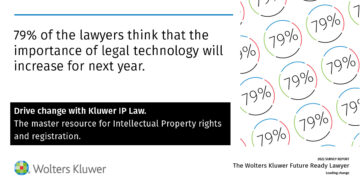The assessment of likelihood of confusion among descriptive marks often causes puzzling decisions, especially when the analysis focuses on whether consumers understand the descriptive character of certain terms, and when different consequences are attached to whether or not such understanding (or lack thereof) matters at all.
The General Court (GC) on 28 April 2021 issued its decision on Case T‑584/17 RENV , regarding the likelihood of confusion among the Spanish trademark PRIMA and the EUTM application PRIMART (fig.), both designating goods in class 30.
PRIMART (fig.), both designating goods in class 30.
The case was referred back by the Court of Justice of the European Union (CJEU), with the decision C‑702/18 P, already commented on here, because the CJEU had criticized the GC failure to take into consideration arguments on the weak character of the earlier mark PRIMA.
The GC upheld again the Board of Appeal (BOA)’s earlier decision even though, this time, it took into consideration the arguments on the alleged weak character of the earlier mark. Although admitting that for part of the Spanish public the term PRIMA would be perceived also with the meaning of “first”, it held in fact that the “Latin word ‘primus’ (prima in the feminine) is, above all, an ordinal numerical adjective which does not immediately convey an idea of excellence” for the Spanish public (as a whole) .
The GC therefore did not take the “hint” expressed by the CJEU that where the earlier trade mark and the sign whose registration is sought coincide in an element that is weakly distinctive with regard to the goods at issue, the global assessment of the likelihood of confusion […] does not often lead to a finding that such likelihood exists (cf. at §53). Fair enough, if some Spaniards do not “perceive/understand” the descriptive/laudatory character of PRIMA, then they must be protected against confusion.
Interestingly enough, two weeks later the GC, in Case T-70/20, decided on May 12, 2021 came to a different conclusion for two trademarks “identical” in their word components “MUSEUM OF ILLUSIONS.
The EU trademark application  was opposed on the basis of the earlier the EUTM
was opposed on the basis of the earlier the EUTM  , both designating museum services in class 41.
, both designating museum services in class 41.
The EUIPO and the BOA focusing the assessment of likelihood of confusion on non-English speaking Greek consumers, for whom the expressions “OF” and “ILLUSIONS” should thus be considered devoid of any meaning and thus distinctive, found a likelihood of confusion.
The GC (somewhat surprisingly in view of its earlier decisions) reversed. The GC held that non-English speaking Greek consumers would perceive the expression ‘museum of illusions’, as referring to a museum of a particular type or relating to a particular theme, even though “unaware of the specific type or theme of that museum”. Therefore “MUSEUM OF ILLUSION” should be considered descriptive of museum services also for the non-English speaking Greek consumers. Taking into consideration the low distinctive character of the earlier mark and the fact that the coincidences only existed for non-distinctive elements, the GC thus denied any likelihood of confusion.
This decision raises some interrogatives on the logical process which the GC follows in deciding cases.
If the GC had followed its assessment in Prima/Primart, it should have held that although for part of the Greek consumers the descriptive character OF ILLUSION in the context of MUSEUM OF ILLUSIONS would be understood, because for another part of the Greek consumers the term OF ILLUSION “does not immediately convey” any meaning, confusion would arise.
Instead, the GC engaged in a somewhat abstract exercise of double-guessing to exclude confusion, because there is no evidence that all of non-English speaking Greek consumers, solely because the first component of a composite trademark is MUSEUM, would necessarily assume or come to the conclusion (and recognition) that the trademark as a whole “refers to a museum of a particular type or relating to a particular theme”. In addition, it is highly debatable that this “recognition” is “immediately conveyed” to such a consumer.
It remains to be seen if the GC will apply the same standard and arguments to other cases.
_____________________________
To make sure you do not miss out on regular updates from the Kluwer Trademark Blog, please subscribe here.
Source: http://trademarkblog.kluweriplaw.com/2021/06/29/great-expectations-often-disappointed/
- 2021
- All
- among
- analysis
- appeal
- Application
- April
- arguments
- auto
- Blog
- board
- cases
- component
- confusion
- consumer
- Consumers
- content
- Court
- DID
- EU
- European
- european union
- Exercise
- Failure
- fair
- Fig
- First
- General
- Global
- goods
- great
- HTTPS
- idea
- IP
- IT
- Justice
- Law
- lead
- mark
- Matters
- Other
- Outlook
- protection
- public
- raises
- Registration
- Services
- start
- theme
- time
- trade
- trademark
- union
- Updates
- View










